
Wrecking Crew is an action game developed and published by Nintendo. Designed by Yoshio Sakamoto, it was first released as an arcade video game for the Nintendo VS. System in 1984, titled Vs. Wrecking Crew with a simultaneous two-player mode. It was released as a single-player game for the Family Computer (Famicom) console in 1985, and as a launch game for the Nintendo Entertainment System (NES) later that year. A sequel, Wrecking Crew '98, was released in Japan in 1998 for the Super Famicom.

Mappy is an arcade game by Namco, originally released in 1983 and distributed in the United States by Bally Midway. Running on the Namco Super Pac-Man hardware modified to support horizontal scrolling, the game features a mouse protagonist and cat antagonists, similar to Hanna-Barbera's Tom and Jerry cartoon series. The name "Mappy" is likely derived from mappo (マッポ), a slightly pejorative Japanese slang term for policeman. The game has been re-released in several Namco arcade compilations. It spawned a handful of sequels and a 2013 animated web series developed by cartoonists Scott Kurtz and Kris Straub.

Kirby Super Star, released as Kirby's Fun Pak in PAL regions, is an anthology platform video game developed by HAL Laboratory and published by Nintendo for the Super Nintendo Entertainment System in 1996. It is part of the Kirby series of video games by HAL Laboratory. The game was advertised as a compilation featuring eight games: seven short subsections with the same basic gameplay, and two minigames.
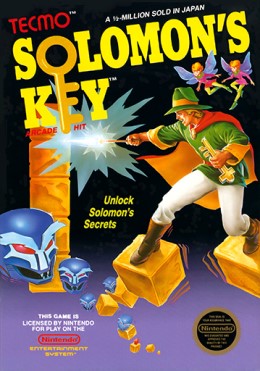
Solomon's Key is a puzzle game developed by Tecmo in 1986 for an arcade release on custom hardware based on the Z80 chipset. It was ported to multiple systems including the Nintendo Entertainment System and Commodore 64. The PC Engine version was known as Zipang and the Game Boy version as Solomon's Club. A prequel, Solomon's Key 2, was released in 1992 for the NES. The game was also ported to Virtual Console for the Nintendo 3DS and Wii U in 2006 and later to Nintendo Switch Online in 2018.
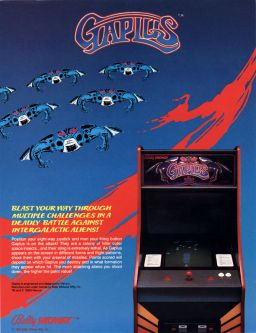
Gaplus is a 1984 fixed shooter arcade game developed and released by Namco. It is the third game in the Galaxian series, serving as a direct sequel to Galaga (1981). In North America, a modification kit was later released to change the name to Galaga 3, possibly to reflect its position in the series. It was the only game other than Phozon to run on the Namco Phozon hardware. A contemporary home port for the Commodore 64 was released in 1988. A "demastered" version of the game was included in Namco Museum Archives Vol. 2 as a bonus title.
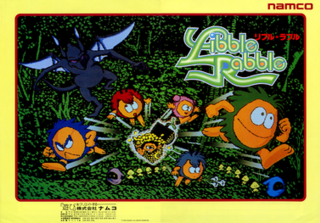
Libble Rabble is a 1983 puzzle arcade video game developed and published in Japan by Namco. The player is tasked with using two colored arrows, Libble and Rabble, to wrap them around pegs and surround small creatures known as Mushlins to "harvest" them under a time limit. The player can also uncover treasure chests that will have the player searching the stage for items in order to access a special bonus stage. It ran on the Namco Libble Rabble hardware, one of the only games to do so.

Puzzle Quest: Challenge of the Warlords is a puzzle video game designed by Steve Fawkner for Australian game developer Infinite Interactive and published by D3 Publisher in 2007. The game combines role-playing with tile-matching elements. Taking place in a high fantasy setting, the player moves his or her character around the game's world and encounters monsters and other enemies to fight so as to gain experience and acquire treasure as in a typical role-playing game. Combat takes place on a board similar to Bejeweled, and by making matches of colored gems, the combatants can cause damage to their opponents, cast spells, or perform other abilities that affect the flow of the game.

Space Invaders Extreme is a re-vamped incarnation of the classic arcade game Space Invaders. The DS and PSP versions were released to mark the 30th anniversary of Space Invaders which saw its original arcade release in 1978. An HD version of the game has been remastered by Backbone Entertainment for Xbox Live Arcade with new four-player multiplayer modes and visualizer backgrounds by Jeff Minter, it was released on May 6, 2009 as a wrap-up to the 30th anniversary. The game is played at a fast pace with an electronic soundtrack and sound effects.

Picross 3D, known in Japan as Rittai Picross, is a puzzle video game developed by HAL Laboratory and published by Nintendo for the Nintendo DS. It was released in Japan in March 2009, in Europe in March 2010, and in North America in May 2010. It uses similar nonogram mechanics to Picross DS, but it puts it in 3D. Outside Japan, the game is part of Nintendo's Touch! Generations brand. A sequel, Picross 3D: Round 2, was released for the Nintendo 3DS in Japan in October 2015, in North America in September 2016, and in Europe and Australia in December 2016.
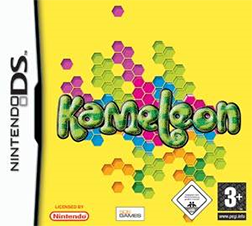
Chameleon is a 2006 puzzle video game released for arcades, PlayStation Portable (PSP), Nintendo DS, Nintendo Switch, PlayStation 4, and Microsoft Windows. In Japan and Asia, the game is called Kuru Kuru Chameleon. In Europe, the game is called Kameleon. In America, the game was going to be called Chameleon: To Dye For!, however the name was changed to just Chameleon. The game had an Arcade release on the Sega NAOMI GD-ROM platform with the title Kuru Kuru Chameleon on March 9, 2006. In 2019, a Nintendo Switch port was released as a digital download by UFO Interactive Games in America and Tommo in Europe. Starfish SD released a PlayStation 4 port as a digital download in 2020 exclusively in Japan. Also in 2020, a Windows port was released for Steam. This game offers players simple controls and competitive play in the attempt to match colours on the playfield. The game features several playable characters along with a bonus character. Each character has her own special power, which can be used to hinder the opponent. Wireless play is also available.

Columns II: The Voyage Through Time is a 1990 puzzle video game released by Sega, as the sequel to Columns. It was released in Japan for the Sega System C. A port was included in the compilation Sega Ages: Columns Arcade Collection released for the Sega Saturn in Japan in 1997. Columns III however, would be released in North America on the Sega Genesis. The game saw an international release through the Sega Ages line on Nintendo Switch.
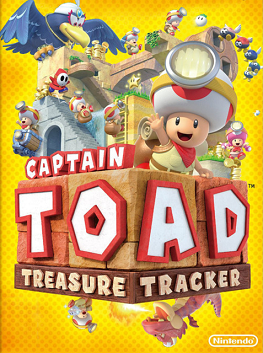
Captain Toad: Treasure Tracker is a 2014 action puzzle video game developed and published by Nintendo for the Wii U. The game was re-released for the Nintendo Switch and Nintendo 3DS in 2018 with additional content. It is a spin-off of the Super Mario series and a part of the larger Mario franchise. The game stars Captain Toad and Toadette as they complete levels and save each other from the antagonist Wingo. Each level is contained within a miniature diorama-like environment that requires puzzle-solving and platforming challenges to complete. The player also uses the Wii U GamePad to rotate the camera and reveal new information and interact with the environment.

Picross 3D: Round 2 known in Japan as Rittai Picross 2 is a Japanese puzzle video game developed by HAL Laboratory for the Nintendo 3DS. It is the sequel to the 2009 Nintendo DS game, Picross 3D. The game was released in Japan on October 1, 2015, in North America on September 1, 2016, in Europe on December 2, 2016, and in Australia on December 3, 2016. In North America, it was only released as a digital download.

BoxBoy! + BoxGirl! is a puzzle-platform game developed by HAL Laboratory and published by Nintendo for the Nintendo Switch. It is the fourth game in the BoxBoy! series, a follow-up to Bye-Bye BoxBoy! (2017), and is first installment to be released outside the Nintendo 3DS. The game features a two-player multiplayer mode, a first for the series.

Good Job! is a 2020 puzzle video game developed by Dutch developer Paladin Studios and published by Nintendo for the Nintendo Switch console. The player controls a megacorporation CEO's son in completing exaggerated office tasks in destructive playground-style puzzles to climb the corporate ladder. Although there are normal ways to complete the levels, the player can be as destructive and creative as they like to beat the level faster.

BoxBoy! is a series of puzzle-platform games developed by HAL Laboratory and published by Nintendo. The series centres around Qbby, a square-shaped character who can produce a string of connected boxes. The boxes are used to overcome obstacles in stages that Qbby must be guided through. The first game, BoxBoy!, released on January 14, 2015, in Japan on the Nintendo 3DS. Its sequel, BoxBoxBoy!, was released for the Nintendo 3DS in 2016, with a third game, Bye-Bye BoxBoy!, in 2017. A physical compilation of the first three games, HakoBoy! Hakozume Box, was released in Japan. A fourth installment, BoxBoy! + BoxGirl!, was released for the Nintendo Switch in April 2019.

Pokémon Café ReMix is a free-to-play puzzle video game developed by Genius Sonority for the Nintendo Switch, Android and iOS. The game was released on June 23, 2020, in North America, and on June 24, 2020, in Japan, Europe and Australia.

Kirby Fighters 2 is a 2020 fighting game for the Nintendo Switch and is the direct sequel to Kirby Fighters Deluxe. Developed by HAL Laboratory and Vanpool and published by Nintendo, the game features characters and assets from the Kirby franchise and uses the Super Kirby Clash game engine. The game released worldwide in September 2020, but was accidentally leaked prior on the Play Nintendo website.
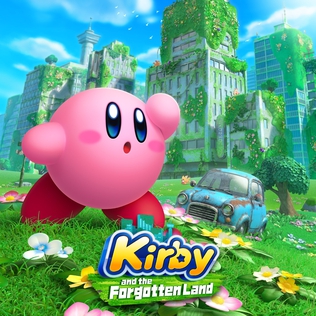
Kirby and the Forgotten Land is a 2022 platform video game developed by HAL Laboratory and published by Nintendo for the Nintendo Switch. It is the thirteenth mainline installment in the Kirby series, as well as the first game in the series in full 3D, excluding spin-offs. The player controls Kirby in an adventure through the titular forgotten land called the New World to rescue Waddle Dees kidnapped by the ferocious Beast Pack. To complete each stage to save the Waddle Dees, Kirby can use a wide range of copy abilities to help battle enemies and progress.

Kirby's Dream Buffet is a party video game developed by HAL Laboratory and published by Nintendo for the Nintendo Switch. It is a spin-off game in the Kirby series. The game was released digitally on August 17, 2022.

















